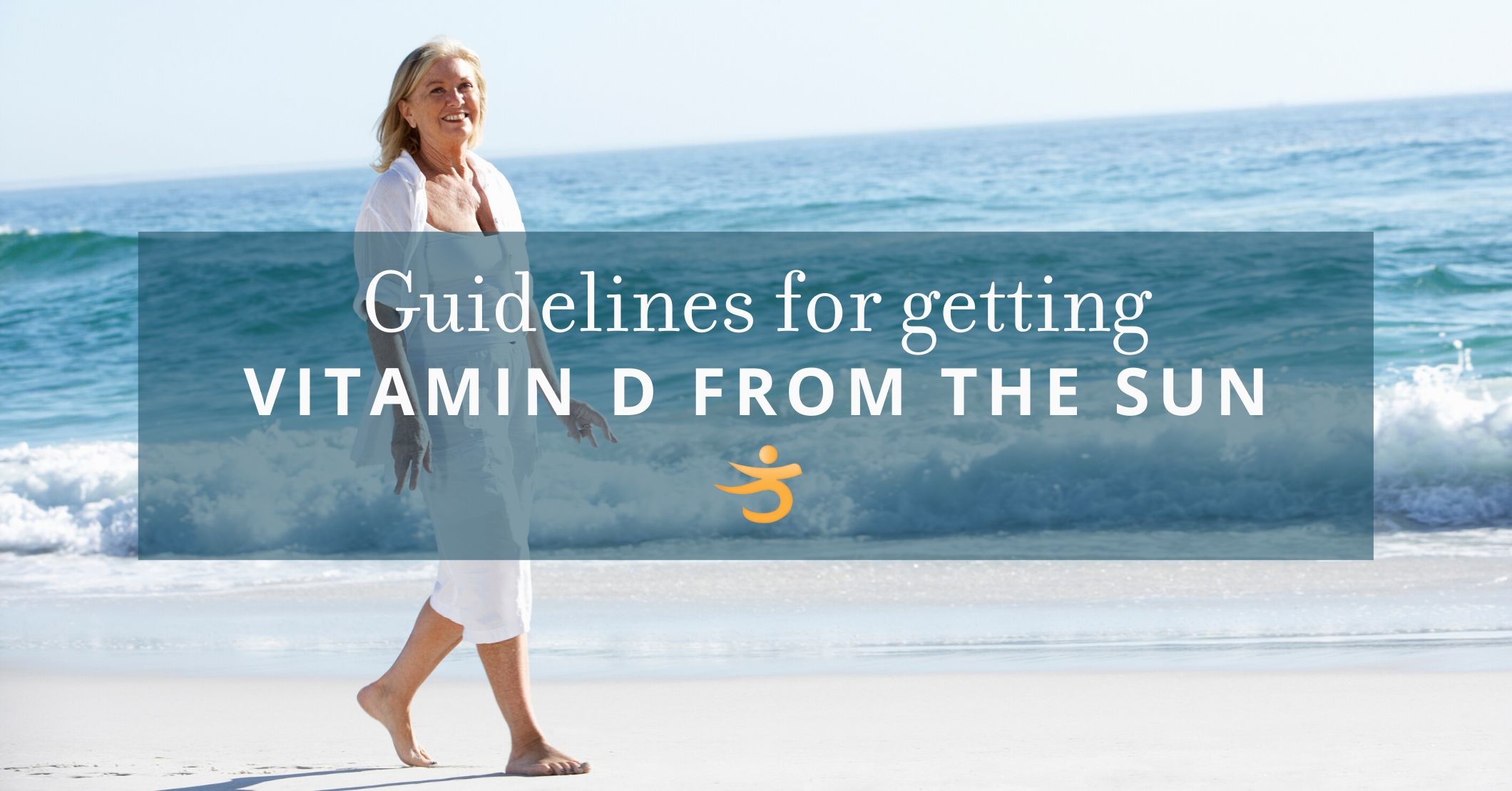
With summer underway, it’s time to take advantage of the free vitamin D the sun has to offer. Sun exposure is the ideal way to help us reach the minimum vitamin D level of 32 ng/mL, with an optimum of 50 to 60 ng/mL.
I also encourage you to get outdoors as much as possible because we are all part of nature. Being outdoors can help our bodies be in harmony with the natural world around us. I use this time of year to play golf and tennis, swim in the lake, bike, kayak, hike, grow vegetables, and get outdoors in any way I can. Even with all the benefits of being outdoors, I still get a lot of questions about sun exposure, so here are my recommendations, as well as important information about sunscreens:
Better Bones Guidelines for Sunlight Exposure (Year-Round!)
• Short periods of exposure to almost the entire body are best, 15 to 20 minutes a day (without sunscreen).
• Very dark-skinned people need 4 to 6 times more sunlight exposure than light-skinned people.
• Use sunscreen after this initial period if necessary to avoid sunburn.
• The useful ultraviolet rays are strongest between 10 am and 2 pm.
• At northern or southern latitudes far from the equator, longer exposure is needed, especially during spring and fall.
• In climates at northern or southern latitudes far from the equator, the skin produces little or no vitamin D during the winter months.
• If your shadow is shorter than you, then you can produce vitamin D from sunlight. If your shadow is longer than you, then you know that you are not exposed to that small spectrum ultraviolet radiation that allows for the production of vitamin D.
Protect yourself from both the harmful sun and inappropriate sunscreens
Just as important as protecting yourself from the sun is avoiding the potential harmful effects of sunscreen ingredients that can increase your overall toxic load. If you’re going to use sunscreen while spending long periods of time outdoors, keep these tips in mind to help you decipher product labels:
• Avoid the ingredients vitamin A (retinyl palmitate) and oxybenzone. The safest options are titanium dioxide and zinc oxide. I personally prefer to use those that have zinc oxide as an active ingredient.
• Use all-natural and organic beauty and body care products whenever possible. Many of the chemical ingredients in personal care products are not only toxins, but also allergens and skin irritants. Do some research before choosing a sunscreen, as it is classified as both a cosmetic and a medication.
• “Organic” and “natural” do not always equal “safe.” When in doubt, avoid products with a long list of unpronounceable ingredients to avoid exposure to synthetic toxins and carcinogens.
• Another way to reduce exposure is to avoid any product that lists “fragrance” as an ingredient, or whose label list ends with the words “…and other ingredients.” Sunscreen manufacturers do not have to list any ingredients, not even those that are carcinogenic or that have been granted “trade secret status” by the FDA.
You can learn more about the benefits of vitamin D in my article “Vitamin D: its benefits are more than ever imagined” And keep in mind that the goal is to have these levels throughout the year, that is why I recommend having a vitamin d test both at the end of summer and at the end of winter to check for possible variations.





